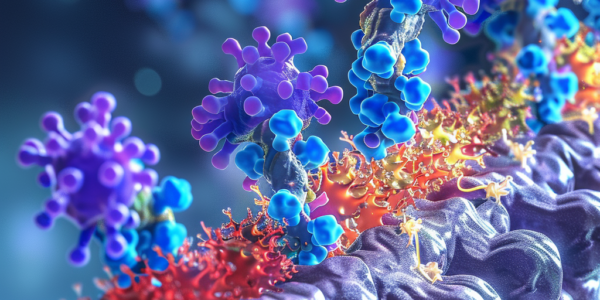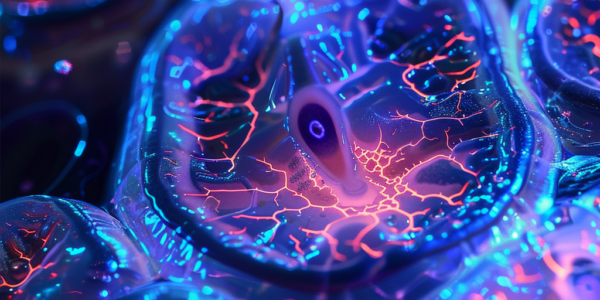Study in Nature Reveals Insights into Modulation of µ-Opioid Receptor Dynamics for Pain Management Therapeutics
A recent study published in Nature has revealed insights into the modulation of conformational dynamics of the µ-opioid receptor (µOR) by ligand efficacy, offering potential for improved pain management therapeutics. The research identified various receptor conformations and their impact on G-protein binding and β-arrestin-1 interaction, shedding light on the development of safer therapeutic profiles for pain management.
Study Identifies Potential Marker for Delayed Recovery of Concussion in Children
A recent study has identified a potential marker for delayed recovery of concussion in children, offering hope for improved diagnosis and treatment. The blood protein alpha-1-antichymotrypsin (alpha-1-ACT) was found to be significantly lower in children with delayed recovery, providing a potential tool for early identification of at-risk children. The study’s publication in the Journal of Neurotrauma underscores the significance of these findings and their potential impact on pediatric concussion management.
Groundbreaking Discovery of Ancient Amino Acids in Dinosaur Eggshell Fossils Sparks New Excitement in Paleobiology
Groundbreaking study reveals ancient amino acids in titanosaur eggshell, sparking new potential for understanding ancient life. Dr. Kirsty Penkman expresses elation at the unexpected discovery, opening new avenues for scientific inquiry and offering valuable insights into the preservation of organic material.
Natural Protein Citrate Synthase Self-Assembles into Fractals, Study Shows
A recent study published in Nature has reported the emergence of a natural protein, citrate synthase from the cyanobacterium Synechococcus elongatus, which self-assembles into Sierpiński triangles. The research utilized cryo-electron microscopy to reveal how the fractal assembles from a hexameric building block and found that different stimuli can modulate the formation of fractal complexes. Despite the discovery, the study suggests that the fractal may not serve a physiological function in vivo, but the discovery of a natural protein self-assembling into fractals sheds light on the potential complexity and beauty of molecular-scale structures in nature.
Breakthrough in RNA Medicine: Small-Molecule Inhibitors Developed Against RNA-Modifying Enzyme METTL16
Discover the groundbreaking research at the Chemical Genomics Center at the Max Planck Institute of Molecular Physiology in Dortmund, where scientists have developed the first small-molecule inhibitors against the RNA-modifying enzyme METTL16. This significant breakthrough paves the way for the development of therapeutic agents targeting RNA modifiers, bringing us closer to understanding the role of RNA in health and disease.
Researchers Discover Mechanism Behind Common Mammalian mRNA Modification
Researchers from the Beijing Institute of Genomics of the Chinese Academy of Sciences have made a groundbreaking discovery regarding the mechanism behind the most common mammalian mRNA modification. This new study sheds light on the process of N6-methyladenosine (m6A) RNA modification, which has significant implications for gene expression and disease. The study unravels the intricate process of m6A modification, affecting the entire life cycle of mRNA and providing crucial insights into the mechanism underlying the m6A RNA modification.
Groundbreaking Advancement in Cancer Treatment with Protein Micromaterials
Researchers at the Autonomous University of Barcelona have developed groundbreaking micromaterials composed of proteins for targeted cancer treatment. These self-contained micromaterials mimic natural secretory granules, delivering nanoparticles to specific cancer cells for destruction. The technology, patented by the researchers, has shown high performance in animal models of colorectal cancer, offering potential for enhanced drug efficiency and patient comfort while minimizing side effects.
AI-Based Tool HLA Inception Has Potential to Revolutionize Personalized Cancer Treatments
Arizona State University scientists have developed an AI-based learning tool called HLA Inception, which has the potential to revolutionize personalized cancer treatments. The tool can predict how an individual’s immune system responds to foreign cells, expediting the process of making predictions on pathological outcomes of patients and potentially transforming patient care.
Organoids reveal link between traumatic brain injury and increased risk of dementia and ALS
A USC Stem Cell study reveals the link between traumatic brain injury and the increased risk of dementia and ALS. The study utilized lab-grown human brain structures known as organoids to explore potential strategies for mitigating these risks, identifying a gene called KCNJ2 as a potential target for intervention. This offers promising prospects for the development of post-injury treatments and preventive measures for individuals at risk of TBI.
Opportunities and Challenges in Protein Function Design and Optimization
Learn about the opportunities and challenges in the design and optimization of protein function, including advancements in structure-based design methods, protein engineering, and the potential for creating new-to-nature activities. Discover how computational design methods have been utilized to enhance therapeutics, enzymes for green chemistry, vaccine antigens, antivirals, and drug-delivery nano-vehicles.










